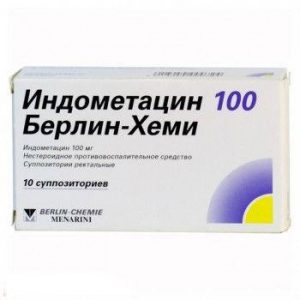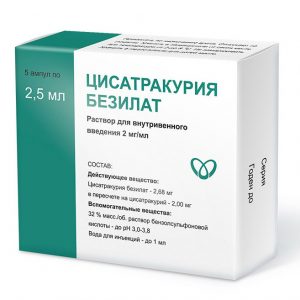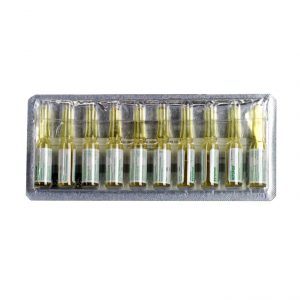Description
Latin name
Amigrenin
Release form
Amigrenin. Tablets, film-coated white or white with a grayish-cream tint, round, biconvex in the cross section, one or two layers are visible, the inner layer is white or white with a yellowish tint.
Packing
2 pcs – blister packagings (1) – packs of cardboard.
Pharmacological action
Antimigraine drug. A specific selective agonist of serotonin 5HT1B-1D receptors (5-hydroxytryptamine-1-like) located primarily in the smooth muscles of the walls of the blood vessels of the brain. Stimulation of 5HT1 receptors leads to selective narrowing of blood vessels in the system of carotid arteries and a decrease in the processes of neurogenic inflammation, without significantly affecting cerebral blood flow. In addition, it has been experimentally established that sumatriptan inhibits trigeminal nerve activity.
It is believed that these effects help to reduce the severity of pain in migraines.
Clinical effect is observed 30 minutes after oral administration of the drug.
Pharmacokinetics
Absorption
When ingested, sumatriptan is rapidly absorbed from the digestive tract, after 45 minutes its concentration in the plasma reaches 70% of max. Absolute bioavailability when administered through presystemic metabolism and incomplete absorption is an average of 14%.
Distribution of
Plasma protein binding is 14-21%.
Metabolism
Biotransformed with the formation of metabolites, the main of which is the indole-acetic analog of sumatriptan.
Excretion of
T1 / 2 is 2 hours. The main metabolite of sumatriptan is excreted mainly in the urine as a free acid or glucuronide conjugate
Indications
Relief of acute migraine attacks, with or without aura.
Contraindications
hemiplegic, basilar and ophthalmoplegic forms of migraine
ischemic heart disease (including angina pectoris)
occlusive peripheral arterial disease
uncontrolled arterial hypertension or congestive heart failure liver
simultaneous administration of preparations containing ergotamine or its derivatives
simultaneous administration of MAO inhibitors and the period up to 14 days after their withdrawal
pregnancy
lactation period (gr feeding-stand)
patients age 18 and older than 65 years
hypersensitivity to the drug.
Use during pregnancy and lactation
The drug is contraindicated in pregnancy and lactation (breastfeeding).
Dosage and Administration
Amigrenin is not intended for prophylactic use.
Adults are prescribed a single dose of 50 mg, in some cases 100 mg.
The maximum daily dose is 300 mg.
If the symptoms of migraine do not disappear and do not decrease after taking the first dose of Amigrenin, then the drug should not be prescribed again to stop the ongoing attack. If symptoms have decreased or disappeared, and then resumed, you can take a second dose over the next 24 hours. The interval between doses should be at least 2 hours.
Side effects of
From the cardiovascular system: flushing of the skin and mucous membranes, hypotension, tachycardia, palpitations, angina attack, transient increase in blood pressure, transient ECG changes of the ischemic type, bradycardia in isolated cases – manifestations of Raynaud’s syndrome.
From the side of the central nervous system: dizziness, weakness, drowsiness, fatigue, visual impairment (diplopia, scotoma, decreased visual acuity).
From the digestive system: discomfort in the abdomen, dysphagia, nausea, vomiting rarely – ischemic colitis, increased activity of liver enzymes.
Allergic reactions: rash, itching, erythema, urticaria, anaphylaxis.
Others: tingling, heat, heaviness, pressure or contraction in various parts of the body, myalgia are possible.
Drug Interaction
When co-administered with food, beverages containing calcium (including mineral water), nutritional supplements, antacids, and other medicines for ingestion, alendronic acid absorption may be impaired. In this regard, the interval between the administration of alendronic acid and other oral drugs should be at least 30 minutes. The combined use of alendronic acid (but not concurrent administration) with estrogen preparations is not accompanied by changes in their action and the development of side effects. The intake of prednisolone is not accompanied by clinically significant changes in the bioavailability of alendronic acid. ACS exacerbate the side effect of alendronic acid on the gastrointestinal tract. pantothenic acid, thiamine, riboflavin. In perimenopausal women, the effect of alfacalcidol may be enhanced by estrogens. Calcitonin, derivatives of etidronic and pamidronic acids, plicamycin and GCS reduce the effect of alfacalcidol. Alfacalcidol increases the absorption of phosphorus-containing drugs and the risk of hyperphosphatemia. Concomitant use of alfacalcidol with calcium drugs, thiazide diuretics can cause hypercalcemia by increasing calcium absorption in the intestine, increasing its reabsorption in the kidneys. Against the background of alfacalcidol therapy, no other vitamin D drugs and derivatives should be prescribed because of the possible additive interaction and the increased risk of hypercalcemia. their simultaneous application is contraindicated.
There are separate reports of the development of weakness, hyperreflexia, and impaired coordination in patients after concomitant administration of sumatriptan and selective serotonin reuptake inhibitors. Amigrenin and this group should not be prescribed at the same time.
Amigrenin and lithium preparations should not be administered at the same time.
Overdose
Symptoms:
increased side effects.
Treatment:
should be monitored for 10 hours in case of overdose, symptomatic therapy should be performed as needed.
Storage conditions
The drug should be stored in a dry, dark place.
Keep out of the reach of children.
Expiration
2 years.
Active ingredient
Sumatriptan
dosage form
dosage form
tablets




